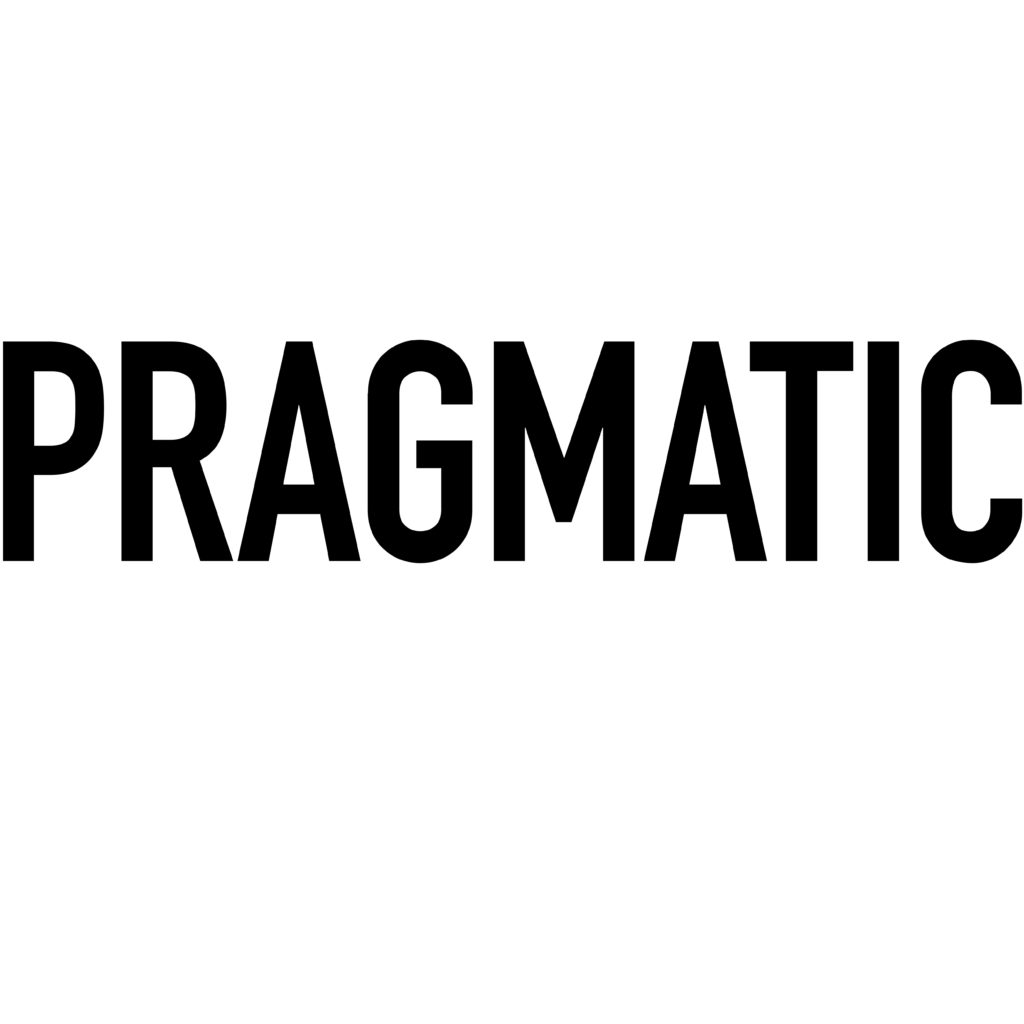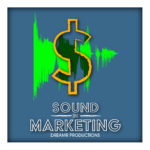Pragmatic Sound Strategy
I interviewed Pragmatic Digital for Episode 25 and 26 of the Sound In Marketing Podcast. Pragmatic Digital is a consultancy that helps clients identify and solve their marketing and customer experience problems by leveraging the Voice channel. It’s founders, Scot and Susan Westwater, have developed a proven process that enables their clients to create, review and deploy Voice experiences that are on-brand while delivering against audience needs. Their primary goal for clients is to create Voice experiences that align with business objectives while delivering value that is both useful and usable to their audiences.
They also wrote a book called Voice Strategy; Creating Useful and Usable Voice Experiences and you can order it here. https://www.voicestrategybook.com/book-order
The Westwater’s both have a background in content strategy marketing and digital strategy as well as user experience background. When they joined forces to start Pragmatic Digital, they knew voice strategy had to be practical; it had to be pragmatic. They asked themselves the questions, how is this helpful and how is this providing value?
A brand voice strategy should serve the business community and the people they serve.
Susan Westwater
The Ready and The Aim
Pragmatic Digital focuses on strategy: the audience’s needs and pain points as well as the company and what it would look like to thrive from a voice presence. They start small and from the ground up in order to build up. They identify what the need is and how a brand can provide value.
Planning in the strategic phase is key to their approach; before any sort of implementation. Their experience is that when you implement while beta testing, you have a higher probability of getting results that say no one wants what you’re selling.
People can be all in without a strategy or without fully knowing the audience or audiences’ needs and pain points. Pragmatic Digital dig into what a companies’ values are and create their journey map to figure out where voice can effectively fit.
It’s important to try and relate with an audience to differentiate which process is most familiar or most utilized (ex. maintaining Websites and app development) for their individualistic needs. You want your company or brand to provide the most bang for their buck. If Voice isn’t the best way to “speak” to your audience; maybe your company is not ready to implement.
“Is this [voice technology] going to solve the problem that your company is wanting to solve? And will voice solve it correctly?”
Susan Westwater
Shiny Object Syndrome
We can’t look at voice or marketing in general as a “tactic”. If “it” doesn’t fit into your marketing strategy, then you shouldn’t do it. Many times, people tend towards the latest “thing” or “scheme” and rush to implement what seems to be working into their arsenal. This is called shiny object syndrome.
If you’re not going to be able to maintain this new “tactic” or it in no way applies to what exists currently throughout your brand, then you should probably think of something else. The key is to be effective and far more efficient with our marketing spend.
Starting something because someone else found success with it is not a good reason to start something. Starting something because it speaks to your brand and customers, regardless of if it is the “it” thing to do, is a much better way to go.
Scot Westwater
Voice In Healthcare
The healthcare industry, as we learned in Episode 18- Sound Saves The Day and Episode 3- Therapeutic Music and Marketing, is embracing voice very heavily. They are trying to find ways to better provide patient value and education in any way that they can. One such way is to create audio based content in the natural language of patients. This could reach patient populations that are drastically underserved with an influx of information that they never had available to them before.
Audio and music has also been used to teach medical concepts.
Once we start learning how people interact with these new opportunities, then we can focus on a “grand slam” and get something a little more comprehensive out there. All that to be said, within the healthcare industry, there is no shortage of opportunities with voice.
Voice Strategy; Creating Useful and Usable Voice Experiences
The Westwater’s debut book Voice Strategy; Creating Useful and Usable Voice Experiences explores the general framework and overall approach to creating usable and useful voice experiences. Scot and Susan go deeper within their supplemental materials on implementation but the book itself focuses on how to create an approach for voice strategy within brands and companies. They also touch on technical and legal requirements. They work with the brand to get the thought and reasoning and objectives honed in so that they can lay down the more important piece AFTER a plan is set. You can take these approaches into any industry. It’s about the needs of the audience and what the business is trying to achieve.
Developing a voice and sound strategy encourages us to try new things, educate ourselves, and prioritize now while it’s still a free-for-all.
Susan Westwater
“Start small and iterate,” according to the Westwater’s. Tracking with a customer’s already chosen journey is a great place to find out where to start and where your business fits (or doesn’t fit) in voice technology. Your business objectives and plan through voice integration comes easier after knowing this.
Where does your audiences’ needs overlap with your business objectives? How can you guide your audience towards revenue building incentives? Where do you assist and retain your audience? All of these questions help prioritize and build your audio road map.
It’s easy to overwhelm yourself with all the different problems you can solve; but it’s important to define what problems you even need to try to solve.
Scot Westwater
Don’t Reinvent The Wheel
We need to learn how to work with the resources that we already have. It’s not about reinventing the wheel. It’s more about crafting the wheel in a way that is leveraging existing content; making it more accessible and more digestible to your audience.
A new voice strategy serves no purpose if it is not crafted around your already existing marketing strategy.
Susan Westwater
The ultimate objective for smart speakers users and marketers is asking a question and getting an answer. These devices are being adopted and being used; creating SEO that translates is massively important.
Don’t get into something just because it’s topical; it needs to fit and look like your brand. There are many different versions of sound marketing. Sometimes it’s not always the whole gamut.
And because of this fact, you don’t need millions of dollars; the bells and whistles are not needed initially.
A New Wave Of Advertising
Companies and brands are already fighting over the relevance of digital vs. broadcast. And amongst all of this now ad voice to the mix! It can seem overwhelming but it doesn’t have to be. You can work voice into your already oiled or need to be oiled machines through strategic thought before implementation.
Take a moment and think back to the Dot Com surge in early 2000’s. If we had known all we know about SEO back then, where would the evolution of our companies and brands be right now? The same could be said for voice. In 20 plus years it will still be here and it will be forefront.
Now is the time to arm ourselves with insight and creativity to push our sound identity into the future.
Now is the time to come up with better sound experiences that will ramp up and evolve much faster as voice continues to evolve; becoming useful usable pieces within the information superhighway.
Here’s a great article about one person’s foresight on the world of voice commerce.
Ideas To Create Ideas
It’s hard to think differently about your advertising when you’re so used to the “tried and true”. Even if you’re not ready to fully take the plunge into voice, try listening to your visual ad without the visual and optimize for voice only in that respect. This will help you when you are ready to dive into voice fully. If you don’t have that sound equity once people do transfer to voice, you’ll have no foot to stand on. Once this “golden era” of sound commences, as Scot said, there will be a tremendous amount of opportunity for both creators in voice as well as voice marketers.
We are constantly distracted and there’s lots of statistics that show we are not focusing our attention on one given media. Sound and audio lets you do 2 things at once.
The Power of Sound
There are things within our mind that we can unlock with sound that we can’t unlock with picture alone. “You don’t dance to a picture, you dance to a sound.” We can deliver experiences that are useful just by making a deliberate choice with the sound associated.
Here’s a great article for a project Pandora did with Propel. https://www.pandoraforbrands.com/article/propel-launches-new-stations-curated-by-fitness-influencers They curated the sound to associate with a taste. Using more than one sense at a time for marketing purposes is so brilliant and so much more successful in truly bonding with your consumer; it creates a more sincere experience.
All our senses should be working together. The more of the senses that we can combine, the more of a sincere representation of our brand we’ll be delivering and a stronger emotional response.
The Current Sound Landscape
Voice is being embedded into every digital property possible. Scot sees that as the next wave; whatever it may become.
Augmented audio is on the rise in such devices as hearables and “in-ear experiences”. There is an interesting convergence of technology, marketing, and user experience that is creating a real well rounded experience.
Smart speakers have become something that is useful not just as a creature comfort; it now provides a service. This wasn’t Amazon’s first attempt at innovation. Their Fire phone was not successful. This was “Amazon’s attempt to be relevant”. Alexa was the one that hit. According to Project Management Institute, Alexa is #13 of most influential projects ever created https://mip.pmi.org/alexa. Just to show you the relevance of this, the iPod was #23 and the World Wide Web was #1.
“We can provide a sherpa with that explorer and guide them to what they need.”
Susan Westwater
Marketing Evolution
The world of marketing has evolved from disruptive marketing to integrated marketing to innovative marketing. The consumer’s attention now goes to the innovative marketing implementation. Amazon, in some ways, created this new wave. Alexa and voice assistance and technology help others to put down their devices and eyes. It could be a stepping stone and become pervasive in society. This flows perfectly into my next episode where we talk about Sound as a Savior.
Right now we’re saying “I can’t remember a time without my smartphone”. In a decade, what will that look like and what will we be saying?
Voice is not just a generational thing. People of all walks of life and ages have adopted and are adopting voice in their day to day for a multitude of very different reasons.
Wrapping Up
There is a huge opportunity now to explore the sound landscape and what it means to your brand strategy. Experiment, educate yourself, and keep your ear to the ground. Now is the time to get your voice out there before everyone else has discovered the full power of sound marketing. Let’s discover the next wave of sound marketing together; because we’ve only scratched the surface.
To order or download Susan and Scot’s book, Voice Strategy: Designing Useful and Usable Experiences, it is available on Amazon or directly at www.voicestrategybook.com.


